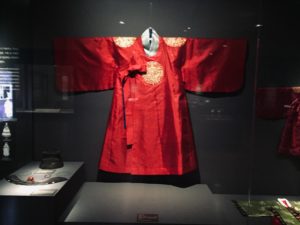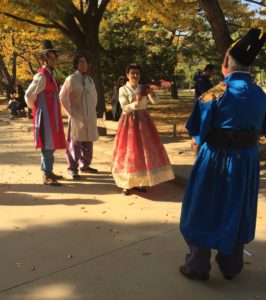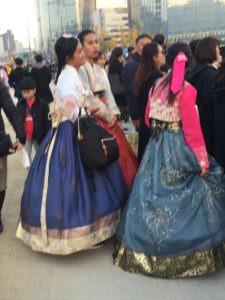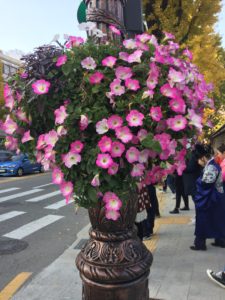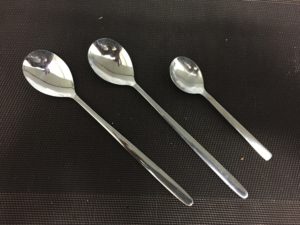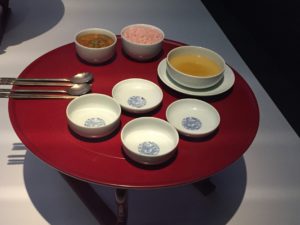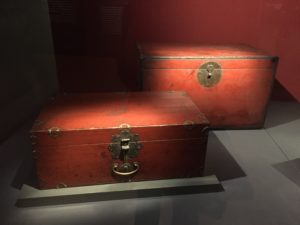Saturday, 3 November 2018
My friend Wayne says that the best way to know a city is to walk it. That works for me, but this morning I thought perhaps I might have to take a bus at one point and I should put Google maps on my new iPad. It seemed a good idea and simple enough, but somehow the iPad wanted to install Google maps on Numbers, which I don’t think was right. There were advantages to MS DOS: Fewer choices and you could type exactly what you wanted.
Unaccompanied by Google maps, I set out on foot in another bright autumn day, though somewhat less bright and a bit hazy. Some perhaps more wiser Koreans were walking around with masks ala Ashland this past summer. But just a few. The rest of us – and so very many of us in the streets of the Palaces District of Juneau-gu were without masks. On a Saturday afternoon, the sidewalks were packed, and God forbid you dwaddled when the throng was charging or desired to charge when the crowd was slowing down.
Bad air or not, the petunias are still happy in this fall weather, and my wanderings – such as they were in accord with the movement of the mass – brought me to the National Palaces Museum, a pleasantly designed new building with walls and form in line with Joseon traditional architecture. Once inside the museum, the exhibit rooms were spacious and well lit, and here were many viewers but not suffocating crowds.The exhibit featured portraits of the kings of the Joseon Dynasty, which held sway in Korea from 1392 to 1910, with a very slight hiccup along the way.

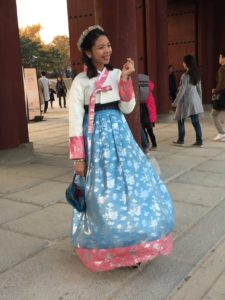
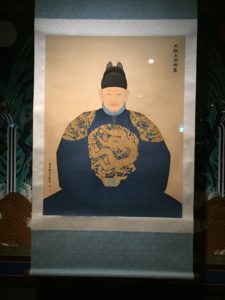
The long dynastic reign was meticulously documented over the centuries in records entitled EXEMPLARY ACCOUNTS OF THE MONARCH. (And there were the records. On display behind the glass,) I wonder how exemplary were the acts of the monarchs, but since the writers of the accounts were subject to regular scrutiny from their subject, it is possible that the accounts could have been just slightly slanted.
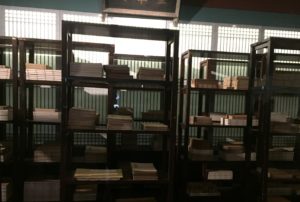
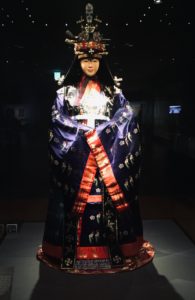
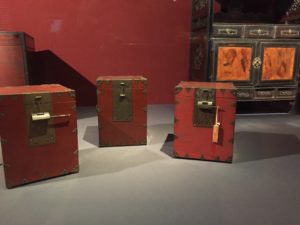
But never mind. The Joseon managed to stay in power for some five hundred years – an impressive record. The king – and the queen – although she had almost equal power and responsibilities in her management of the internal and housekeeping affairs of the palace and its female contingent – I have not found any mention of exemplary accounts of the Monarchess. Nevertheless, the king (and by extension the queen) was supposed to embody the wisdom of the Universal Creator, of which he was considered a direct descendant, to be thereby infinitely wise and upright, and he was expected to be frugal. Ostentatious the Korean royals were not. And in this way possibly they were frugal.
Consider this simple wooden bench, the throne on which sat his Highness, a “bench” of the finest wood crafted by the best craftsmen. Occupants of the royal household enjoyed clothes and linens and housewares made of the finest and most expensive materials fashioned and created by the most highly skilled artisans. Much of such is beautifully exhibited in the Museum of the Palaces. The wooden chests, dishes, and silverware are distinctly Korean. The royal silverware is elegantly simple and this style of silverware is in use today and was included in my flight on Asiana when dinner was served.The array and type of small bowls used by the royal family are also part today’s typical Korean meal.
The clothes were colorful and full – fine silks, carefully placed embroideries, in bright and rich colors. And these. Clothes, or rather simulations of these clothes but not of fine silk, are worn by many Korean nationals, particularly the young men and women, when they visit the palaces and historic Korean sites. Their dress allows them free entry, and it is delightful to see so many colorfully dressed people in the natural setting of the period to which the costumes belong. But these decorated costumes of today do not speak of Korean royal frugality.
